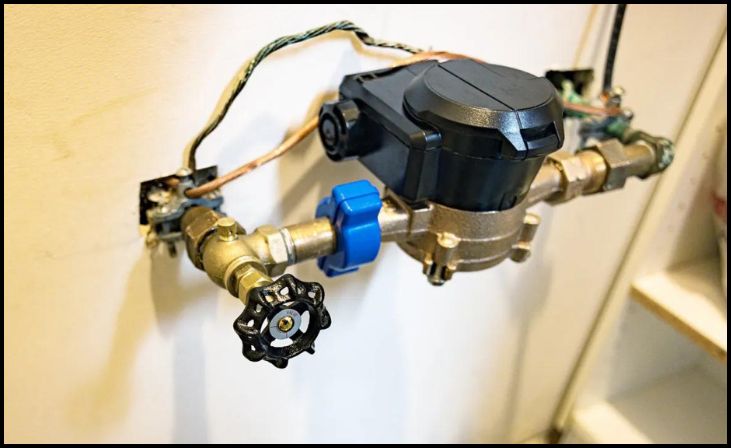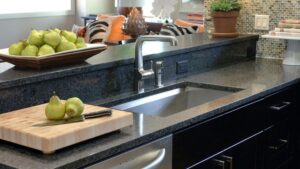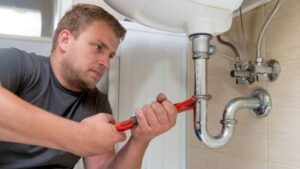
Smart Home Technology Integration for Automated Plumbing
Smart Home Technology Integration for Automated Plumbing is reshaping how we interact with our homes, introducing a new era of efficiency and convenience. This innovative approach combines cutting-edge technology with plumbing systems, allowing homeowners to optimize water usage, enhance safety, and embrace a sustainable lifestyle. In this article, we explore the intricacies of this integration, from the seamless installation process to the diverse range of smart plumbing devices available.
As we navigate through the benefits, security measures, and future trends, readers will gain valuable insights into transforming their homes into intelligent, responsive environments. Join us on a journey into the world of Smart Home Technology Integration for Automated Plumbing, where innovation meets everyday living.
Smart Home Technology Integration for Automated Plumbing
Benefits of Smart Plumbing

Smart plumbing brings forth a myriad of benefits that go beyond mere convenience. The integration of automated plumbing systems enhances efficiency, conserves resources, and leads to significant cost savings. Let’s explore these advantages in detail.
Efficiency and Resource Conservation
One of the key advantages of smart plumbing is its ability to optimize water usage. Sensor-based systems can detect leaks, prevent wastage, and ensure that water is used judiciously throughout the home.
Cost Savings
Smart plumbing systems contribute to cost savings by minimizing water wastage and reducing utility bills. The investment in these technologies often pays off in the form of long-term financial benefits.
Enhanced Safety
Automated plumbing systems offer enhanced safety by promptly detecting leaks and preventing potential water damage. This not only safeguards your property but also contributes to a more secure and worry-free living environment.
Read Also: Eco-friendly Plumbing Solutions for Sustainable Homes: A Comprehensive Guide
Types of Smart Plumbing Systems
Smart plumbing systems come in diverse types, each leveraging technology for enhanced functionality. Sensor-based systems utilize advanced sensors to detect changes in water flow, pressure, and temperature. IoT-enabled devices enable remote monitoring and control through connected devices. Additionally, remote monitoring systems offer real-time insights into plumbing status. These innovations collectively redefine how we manage and interact with our plumbing infrastructure, introducing a new level of efficiency and convenience to modern homes.
Sensor-Based Systems

Sensor-based systems rely on advanced sensors to detect changes in water flow, pressure, and temperature. These systems can identify leaks, track water usage patterns, and provide valuable insights into household water consumption.
IoT-Enabled Devices
Internet of Things (IoT) has made its mark in the plumbing industry. IoT-enabled devices allow homeowners to monitor and control their plumbing systems remotely using smartphones or other connected devices.
Remote Monitoring Systems
Remote monitoring systems provide real-time insights into the status of your plumbing. This enables proactive maintenance and timely intervention to address potential issues, ensuring the seamless functioning of your plumbing infrastructure.
Installation Process
The installation process for smart plumbing systems offers two distinct approaches. Opting for professional installation ensures seamless integration, as experts tailor the system to the home’s unique needs. Alternatively, a DIY installation provides a cost-effective option for tech-savvy homeowners, guided by user-friendly manuals. Whether choosing professional expertise or embracing a hands-on approach, the installation process ensures the successful implementation of smart plumbing technology in homes, transforming the way we interact with our plumbing infrastructure.
Professional Installation Considerations
Opting for professional installation ensures that the smart plumbing system is integrated seamlessly with your existing infrastructure. Professionals can assess your home’s unique requirements and tailor the installation process accordingly.
DIY Installation Guide
For the tech-savvy homeowners, a DIY installation guide can be a cost-effective option. Many smart plumbing devices come with user-friendly manuals, making it feasible for individuals to set up the systems on their own.
Common Smart Plumbing Devices
A variety of smart plumbing devices are available in the market, each serving a specific purpose. Let’s explore some of the commonly used smart plumbing devices.
Smart Faucets
Smart faucets offer touchless operation, reducing the risk of germ transmission. These faucets also come with features like temperature control and water flow adjustment, enhancing user convenience.
Leak Detection Sensors
Equipped with advanced sensors, leak detection devices can identify water leaks and notify homeowners in real-time. This early detection prevents potential water damage and minimizes repair costs.
Automated Shut-off Valves
Automated shut-off valves provide an added layer of security by automatically shutting off the water supply in the event of a detected leak. This feature prevents extensive damage and gives homeowners peace of mind.
Integration with Home Automation Systems

Smart plumbing devices can seamlessly integrate with existing home automation systems, enhancing overall efficiency and convenience.
Compatibility with Smart Home Hubs
Many smart plumbing devices are compatible with popular smart home hubs, allowing for centralized control and monitoring through a single interface.
Voice-Activated Integration
The integration of voice-activated assistants like Amazon Alexa or Google Assistant adds an extra layer of convenience. Homeowners can control their plumbing systems using simple voice commands.
Security and Privacy Concerns
As with any smart technology, security and privacy are paramount. Smart plumbing systems incorporate robust measures to address these concerns.
Encryption and Cybersecurity Measures
Leading smart plumbing manufacturers prioritize encryption and robust cybersecurity measures to protect user data from unauthorized access.
Data Privacy Regulations Compliance
Compliance with data privacy regulations ensures that user information is handled ethically and securely. Smart plumbing systems adhere to these regulations, fostering trust among users.
Future Trends
The landscape of smart home technology integration for automated plumbing is ever-evolving. Let’s explore some of the anticipated trends that will shape the future of this industry.
Advancements in AI and Machine Learning
Continuous advancements in artificial intelligence (AI) and machine learning will lead to smarter and more adaptive plumbing systems, further enhancing efficiency and reducing environmental impact.
Integration with Sustainable Technologies
The future holds the promise of integrating smart plumbing with sustainable technologies, contributing to water conservation and environmental sustainability.
Read Also: DIY PLUMBING UPGRADES FOR A COST-EFFECTIVE HOME IMPROVEMENT
Case Studies
Explore real-life case studies showcasing the tangible benefits of smart home technology integration for automated plumbing. Homeowners report reduced water bills, enhanced safety, and overall peace of mind through the adoption of these innovative systems. These cases exemplify the practical advantages of embracing smart plumbing, providing valuable insights for those considering the integration of cutting-edge technology into their homes.
Real-Life Examples of Successful Integration
Explore case studies where homeowners have experienced tangible benefits, such as reduced water bills, enhanced safety, and peace of mind.
User Testimonials

Hear from users who have embraced smart plumbing technologies and share their positive experiences, providing valuable insights for potential adopters.
Smart Home Technology Integration for Automated Plumbing
In this section, we take a deep dive into the intricate details of smart home technology integration for automated plumbing. From choosing the right devices to optimizing their performance, this section serves as a comprehensive guide for homeowners.
Conclusion
As we conclude this exploration of smart home or home automation technology integration for automated plumbing, the future appears promising. With advancements in technology, increased user adoption, and a commitment to sustainability, smart plumbing is set to become an integral part of modern homes.
FAQs
How do smart faucets work?
Smart faucets use infrared sensors to detect the presence of hands and activate water flow. This touchless operation minimizes the risk of germ transmission and enhances user hygiene.
Are smart plumbing systems compatible with all pipes?
Most smart plumbing systems are designed to be compatible with standard plumbing infrastructure. However, it’s essential to check compatibility before installation.
What maintenance do smart plumbing devices require?
Smart plumbing devices generally require minimal maintenance. Regular checks for software updates and occasional sensor cleaning are recommended.
Can smart plumbing be retrofitted in existing homes?
Yes, many smart plumbing devices are designed for retrofitting in existing homes. However, it’s crucial to ensure compatibility and may require professional installation.



